Building the Mini-studio
In planning the studio, the Fabrikam staff must weigh cost against benefit. The studio will not generate money for the company directly, but using it and Microsoft Producer will save the company money that might otherwise be spent on transportation, lodging, loss of productivity, and other expenses related to face-to-face presentations. By recording the presentation, employees can view it at their convenience, rather than organizing their time and travel around a meeting. The presentation can reach more viewers worldwide, and can save the company money, time, and resources.
Fabrikam will create a studio that is easy to use, even for employees who know nothing about producing videos. They need a space that is large enough to hold the presenter, a desk, the camera, and other recording equipment using a layout similar to the one shown in figure 19.2.
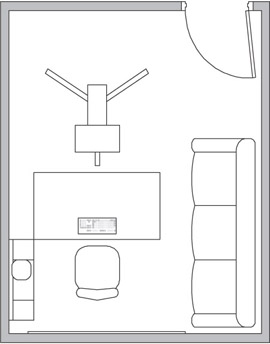
Figure 19.2: The layout of a simple Producer mini-studio.
With this layout, the presenter controls the entire recording process while sitting at the desk. He faces the camera across the desk, and uses the keyboard and mouse to control the capture and what he sees in the teleprompter. A low side table to the presenter’s left holds the audio mixer and processor. The sofa is not necessary for recording a presentation. However, it is not a bad idea to keep in mind that others may be involved, so the space should be large enough to accommodate several people, even though only one will be on camera.
The Fabrikam staff will first select an appropriate room for the mini-studio, then they will prepare the space. After the studio space is completed, they will bring in the equipment and wire it.
Selecting the Mini-studio Space
In this scenario, there is no need to build a special studio. For example, an enclosed office can provide an adequate space. In selecting the space, there are some things to consider. For video, you need a space in which you can control the light. Fabrikam will be using small studio lights that provide the correct type and amount of light. You need to be able to eliminate other sources of light, such as overhead fluorescent lights and outdoor light. You also need to eliminate potential distractions for the presenter, such as people walking by. An interior, windowless room would be ideal.
For audio, you need a space in which you have control over the sound that gets recorded. Ideally, the end user should hear only the presenter. Anything else, such as machines, people talking, air conditioning, and birds singing, is distracting. You also want to be able to eliminate sound reflections, which can make the presenter sound like she is in a restroom or warehouse. A carpeted office space with some acoustic tile will help. The best way to test a potential space is to simply stand in it and listen. If you hear elevator motors, heavy office conversation, outside traffic, or any other sound, there is a good chance that it will be picked up by the microphone.
The perfect studio for recording sound has very thick walls for eliminating external sound. Professional audio studios are actually constructed on floating floors. All walls, the ceiling, and the floor are acoustically isolated from the external building and the ground so no external sound, including very low-frequency sounds from traffic and airplanes, gets transferred into the space. There are also no parallel surfaces, so sound cannot bounce between two wall planes. The surfaces are also softened with acoustical material to stop sound from reflecting.
Fabrikam finds the ideal space in an interior office that was used for storage. The space is 10 feet by 12 feet, with a dropped acoustic-tile ceiling. The floor is carpeted and, with the door closed, no external light gets in. Except for the occasional hallway meeting and some air conditioning noise, the room is quiet.
Preparing the Mini-studio Space
The Fabrikam studio space comes with carpeting and a dropped ceiling that absorbs some of the reflected sound. However, there are several other sound issues that need to be addressed.
Ventilation Noise
The sound of air rushing through ventilation ducts is so ubiquitous that you may have learned to tune it out. However, microphones pick up this sound with as much clarity as the presenter, and it is not easy to eliminate. HVAC airflow is a full-spectrum sound, meaning that it contains sound of all frequencies—high hissing to low rumbling. The best way to eliminate it is to turn off the source, but this is not always possible in an office environment. It would also not be advisable because the enclosed studio could become uncomfortably hot when filled with people and video lights.
The best solution for dealing with the sound of rushing air coming through air ducts is to baffle or deaden the sound. The noise is caused by air being forced through and over surfaces. You can eliminate some noise by removing the air diffuser, so the air flows straight and unimpeded into the room. You can also hire an HVAC contractor to lengthen the inflow duct so that it can be bent into two or three loops to baffle and slow the air. A baffle box can also be built to cover the return duct. It should include a section of ducting that contains sound-absorption material.
Hard Surfaces
The office space is small and all the surfaces are parallel. Except for the soft floor and acoustic ceiling panels, conditions are near perfect for creating standing waves and reflections. A standing wave occurs when a sound wave gets trapped between two parallel surfaces that are the same distance apart as the length of the wave. The result is an increase in volume of sounds at that frequency.
To help eliminate some standing waves and reflections, you can add thick sound absorption material to the walls. You can hang sound baffles that contain fiberglass insulation covered by a cloth like burlap. A better solution is to cover the walls with sound panels, such as the ones used in the compression suite in chapter 15. The panels are made from a foam material that is easy to apply and cut to fit around objects. Figure 19.3 shows the uneven surface of the panel, which serves to baffle or diffuse the sound waves. You cannot eliminate every hard, reflective surface. The goal is to cover at least one side of a parallel pair.
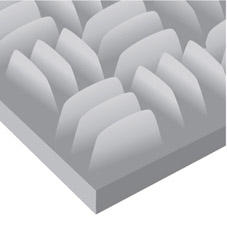
Figure 19.3: Wavy surfaces of sound panels help reduce standing waves.
Noisy Equipment
As part of preparing the space, the Fabrikam staff needs to create a sound-dampened area or enclosure where the encoding computer can be located. They could use an enclosed rack like the one in the compression suite. The only problem with a rack is that it takes up space in an already crowded room. Also, the computer does not need to be in the room. Fabrikam takes a tip from the design of the studio control room and locates the computer in an adjacent office. All they need is a hole in the wall to route cables for the mouse, keyboard, monitor, audio, and video.
People Sounds
Fabrikam adds an “on-air” light next to the studio door in the hall to eliminate one important source of noise. The light is wired to a switch on the desk. The switch can also be wired to the studio lights. Prior to recording, the presenter merely flips the switch on. Lights, such as the one illustrated in figure 19.4, are available from a number of broadcast suppliers.
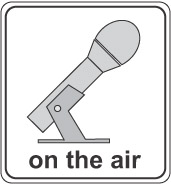
Figure 19.4: On-air lights remind colleagues that a recording is in progress.
Outfitting the Studio
In keeping with the quality standard established by the Media department, Fabrikam will use professional or semi-professional equipment that produces broadcast-quality video and audio, and is well constructed so that it can withstand heavy use. The following list describes the equipment and where it will be located.
Video-related Equipment
The following video equipment is used in the mini-studio:
-
Camcorder. A semi-professional digital camcorder that provides high-quality video and professional features. The one used by Fabrikam includes three CCDs (Charge-Coupled Devices), sometimes called chips, for converting light into an electrical signal. With three CCDs, the camcorder is capable of recording sharper pictures that have truer colors. Canon, Sony, and JVC are among the companies that make three-chip camcorders.
-
Tripod. A professional tripod from a company such as Sachler or Vinten that is lightweight, but capable of holding a camera and teleprompter.
-
Teleprompter. A teleprompter enables presenters to view images on a monitor while looking straight into the camera lens. It appears to viewers as if the presenter is looking directly at the camera even though the presenter is actually looking at the monitor image reflected on a piece of glass. The image the presenter chooses to view can be a script, a rundown, notes, PowerPoint slides, or anything else. Figure 19.5 shows how a teleprompter works.

Figure 19.5: A schematic view of teleprompter operation.Teleprompters from companies such as Mirror Image and QTV use lightweight, LCD-based monitors. A teleprompter makes it easier for the presenter, who does not have to constantly refer to notes off-screen, and it makes for a more compelling presentation for the viewer.
-
Backdrop. A single color or textured backdrop attaches to the wall or hangs from the ceiling behind the presenter. It could even be painted on the wall. Blue, neutral gray, or a shade of brown works best. Stay away from red. Backdrops are available from studio supply companies.
Additional, optional equipment includes a videotape deck and scan converter that can be provided if you want to offer the user more production devices. Users can capture content from the tape. If they want to display the video from a laptop, for example, the scan converter can be used to match the video output to the studio’s monitor and teleprompter.
After video from other sources is captured, the end user can edit it with the video of the presentation in Producer. Also, a small video monitor can be placed on the desk, so presenters can position themselves and check video quality before recording. Keep in mind, however, that the more devices and options you offer users, the more “how to” information you will have to provide.
Figure 19.6 shows part of a mini-studio configuration similar to the one Fabrikam is building. The figure shows the part that faces the presenter. The teleprompter (draped in black cloth) sits in front of the camcorder. Both are mounted on a tripod. A flat-panel computer monitor is positioned below the teleprompter. The video monitor and optional VCRs are placed to one side. Note that, in a studio, the only part that has to look good is the part the camera will see.

Figure 19.6: The video recording installation in a Producer mini-studio.
Audio-related Equipment
Here are some examples of audio equipment commonly used in a Producer mini-studio:
-
Lavalier microphone. A lavalier typically comes with assorted clips that enable a presenter to quickly attach the microphone to a tie or blouse. Of all the microphones, a lavalier provides the most foolproof way to capture high-quality sound. Lavaliers are available from a variety of companies, such as Sony, Sennheiser, and Shure. A lavalier with a clip-on attachment is shown in figure 19.7.
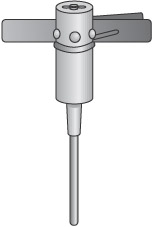
Figure 19.7: Example of a lavalier microphone. -
Audio processor. An audio processor changes the audio signal in some way. The type of processor Fabrikam will use in the mini-studio adjusts the audio level automatically, so the volume is even and does not cause distortion. This type of processor is called a compressor/limiter. Companies such as Symterix and Rane offer specialized compressor/limiters called voice processors, which provide additional tools for working with vocal sound.
A high-quality audio processor is often a complex device designed for use by an experienced audio engineer. For a self-service mini-studio, you can have the processor adjusted in advance, and then locate it where users cannot easily customize the settings. Several products come with a number of factory presets and enable users to save custom settings.
-
Audio mixer. If you are offering the user only one microphone, you will not need a mixer. However, if you want to offer multiple microphones and the ability to copy from tapes, you can use a mixer similar to the small mixer used in the compression suite built in chapter 15.
-
Speakers and headphones. The user will require some means of listening to audio that has been recorded. Studio monitors like the ones used in the compression suite would be a good choice. Often, a high-quality pair of computer speakers or headphones is adequate.
Lighting Equipment
The goal of lighting in Fabrikam’s self-service studio is to create a pleasant, soft, even light that will work for just about any presenter. The lighting will be pre-configured and ready to go. All the presenter has to do is turn the lights on with one switch.
The most popular video production lighting instruments use incandescent lamps, such as quartz halogen lamps because they output adequate light for video recording, take up little space, and the color temperature of the lamp does not drift over time. (Color temperature indicates the color of a light source: incandescent light has a more reddish color temperature than sunlight, for example.)
The Fabrikam studio, however, will use fluorescent lights because they last longer and run cooler than incandescent lights. The cooler light will enable the studio to use less air conditioning, which will help lower the background noise in the room. Fluorescent lights also provide a very flat, soft light, meaning the light level is even, without harsh shadows. The fluorescents that Fabrikam will be using are brighter and produce a more even light than the ones commonly used in overhead office fixtures, and they produce light with the correct color temperature.
To give the set an even light, the Fabrikam staff will place fluorescent lamps, such as those from Lowell or Kino Flo, on either side of the camera. They will also place a backlight above the backdrop; this light is focused down on the back of the presenter’s head. Backlights create a rim of light on the subject’s hair that helps separate the image of the presenter from the background. The Fabrikam design will use a small, 200-watt quartz halogen light. However, a fluorescent light will work if there is enough space for it. Figure 19.8 shows the approximate placement of the lights.
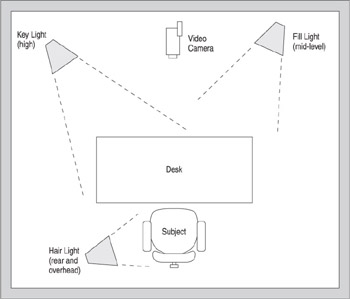
Figure 19.8: Placement of lights in the Producer mini-studio.
The lights will hang from pipes running between the two side walls so there is less clutter on the floor. You can use floor stands if you are unable to hang the lights. Light stands, mounting hardware, and complete kits can be purchased from video production or photography equipment suppliers.
EAN: 2147483647
Pages: 258